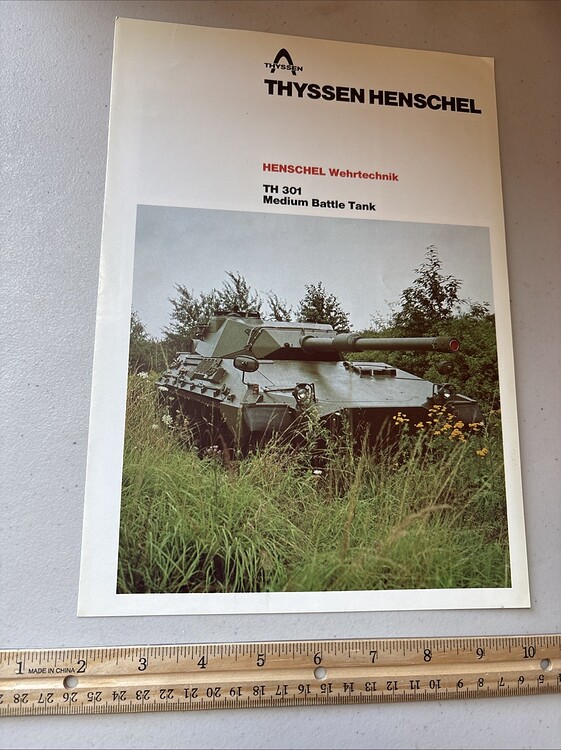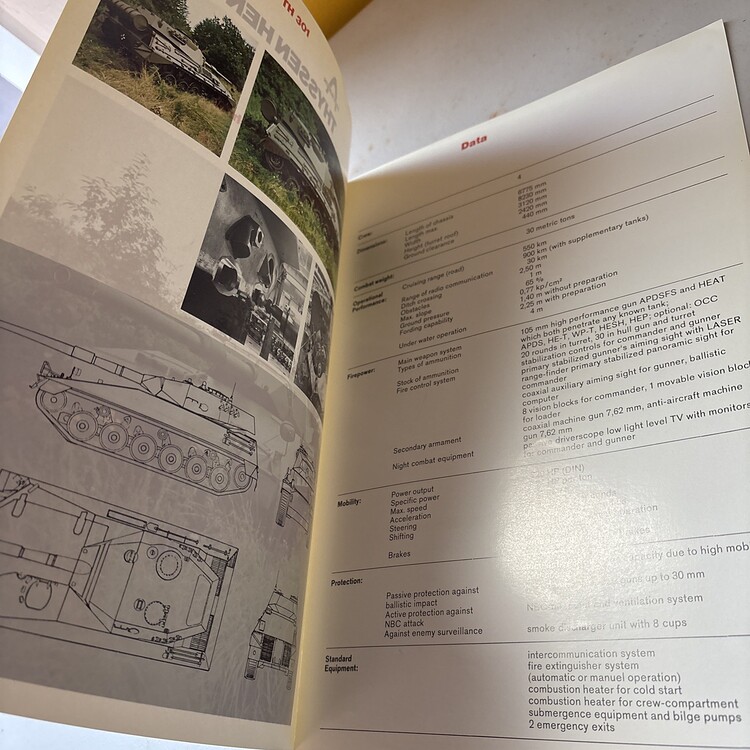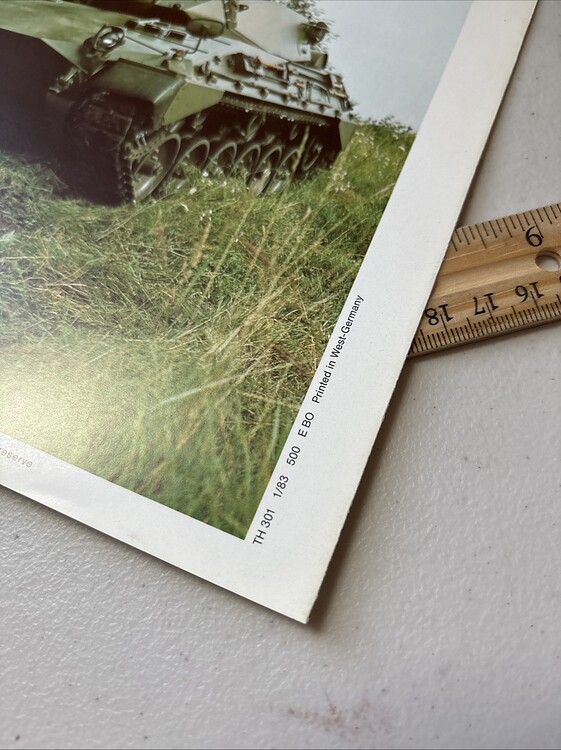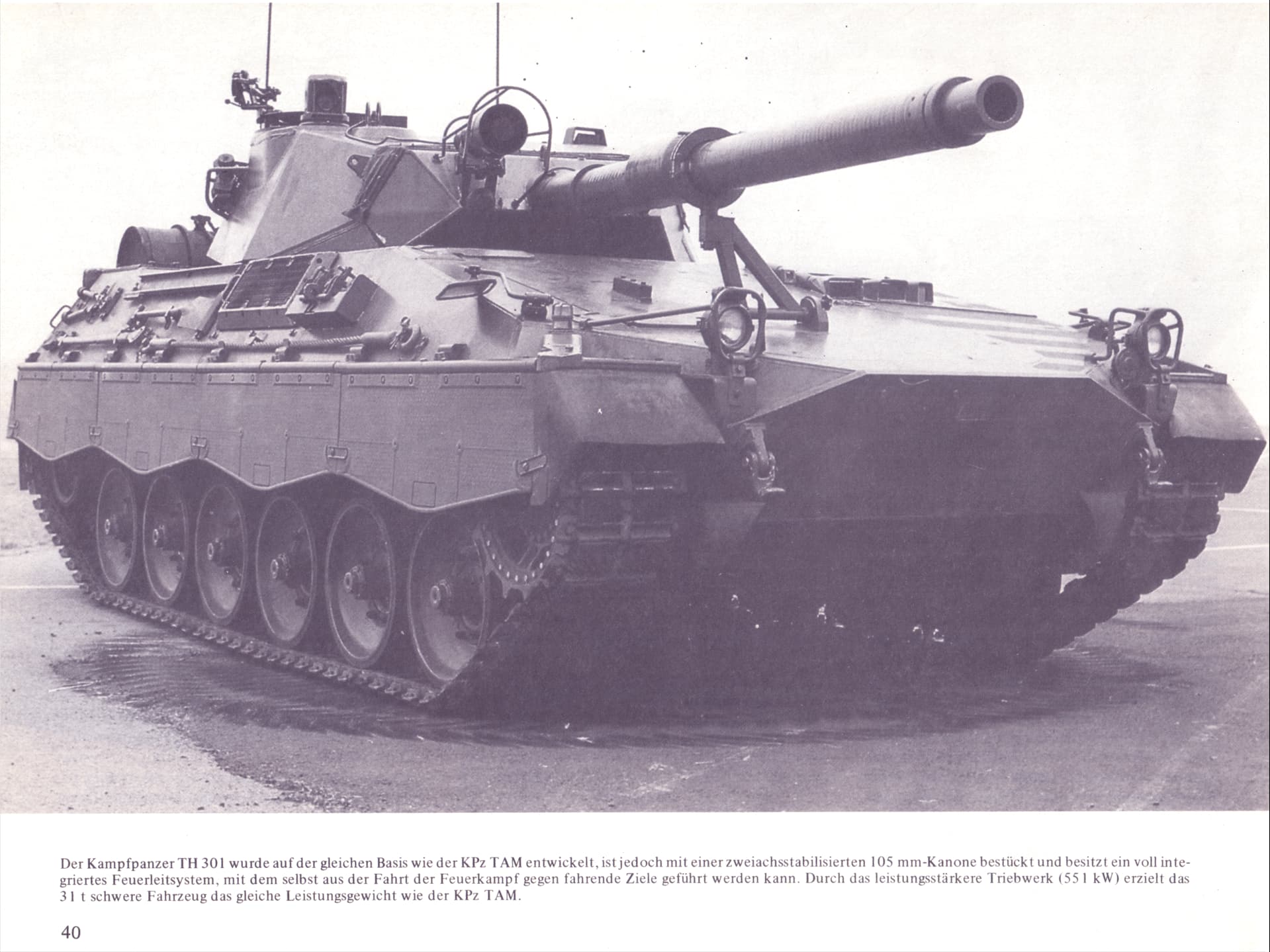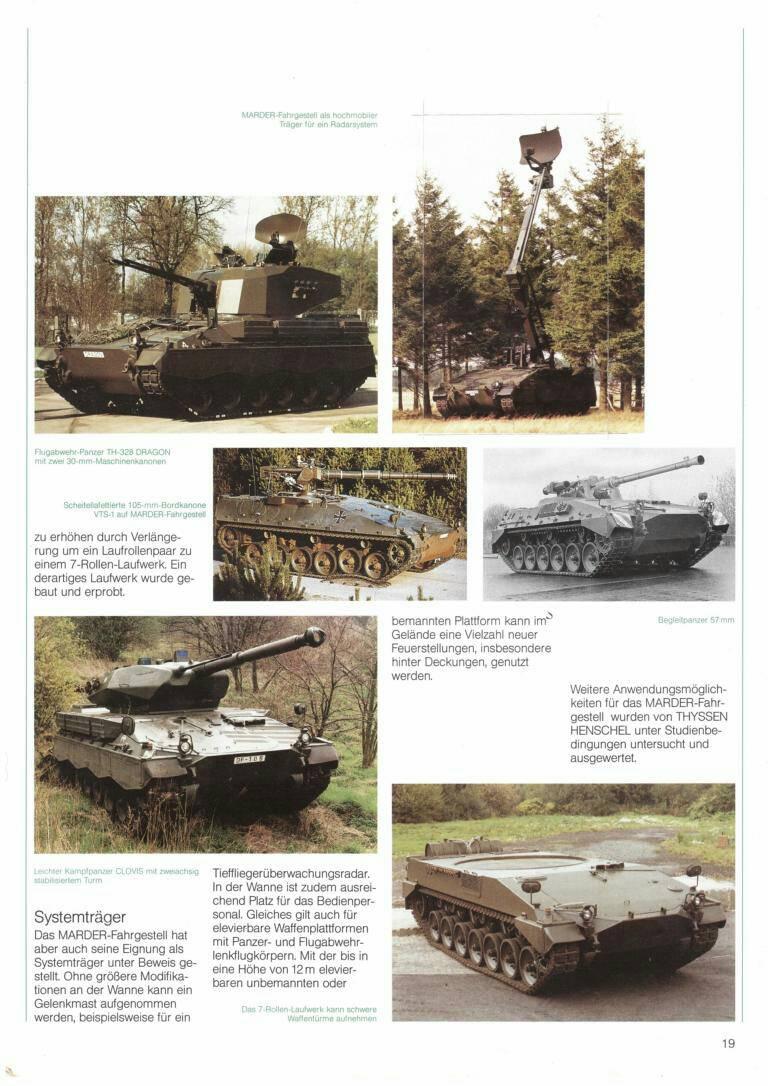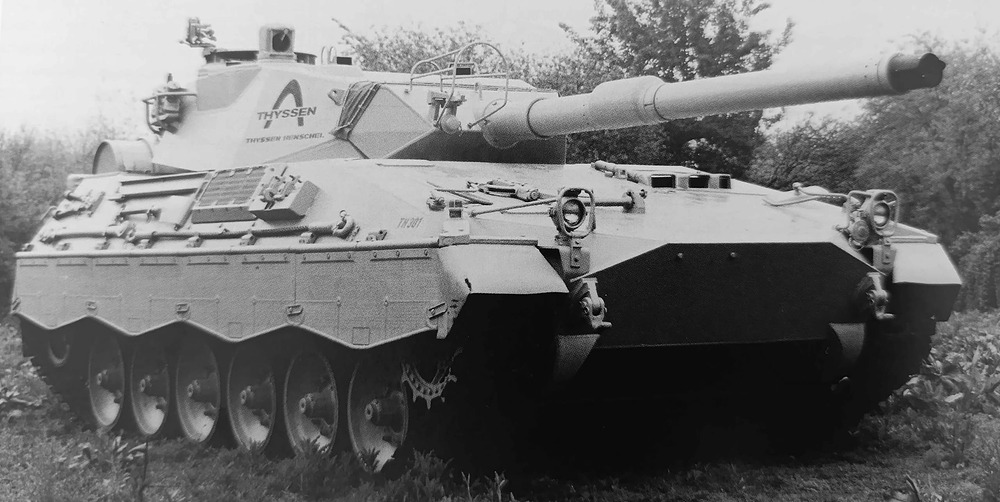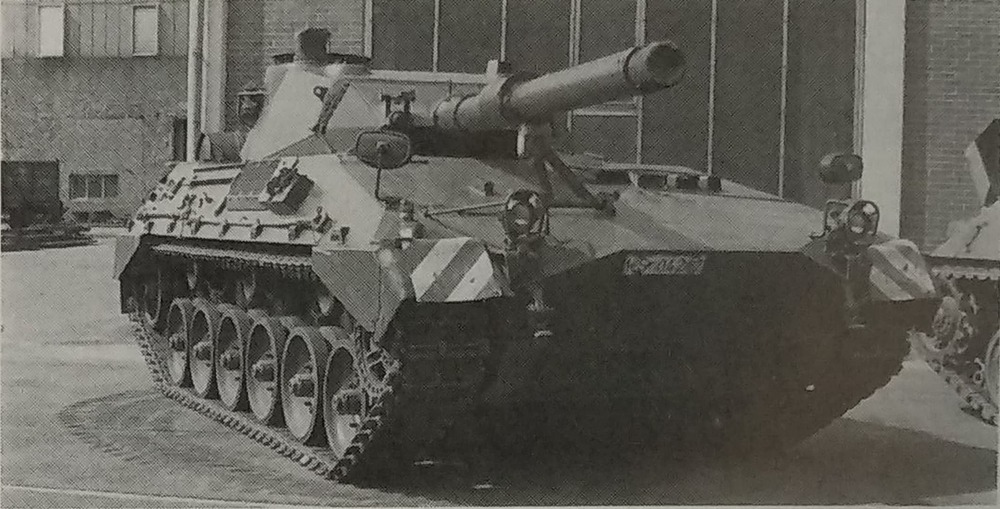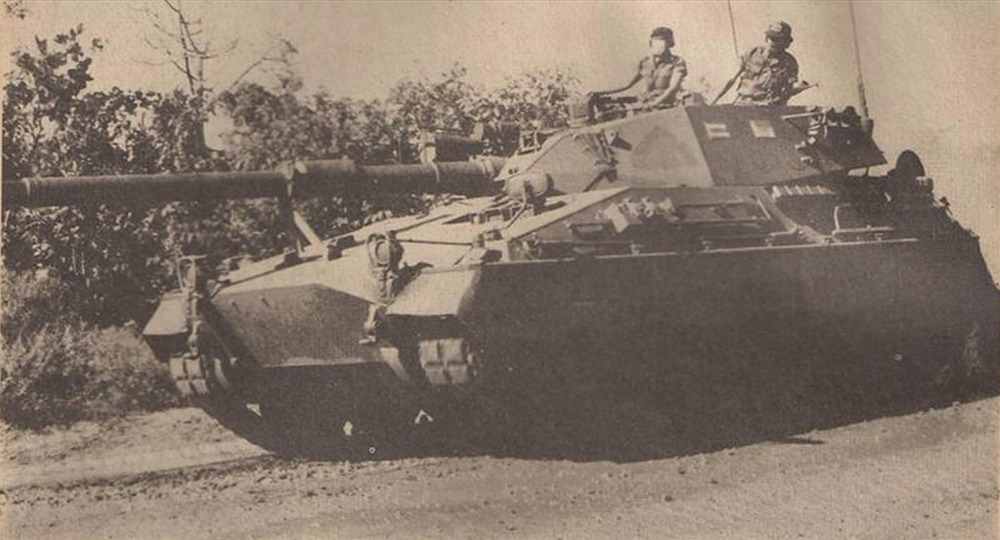- Yes
- No
Welcome to the suggestion for the TH 301/A4, shortened here to just TH 301. While this may look like a TAM, it can be considered an improvement of the TAM prototype. The changes are primarily internal, and wouldn’t be anything that would affect its performance in-game from the basic TAM too much. Let’s find out a bit more about it, I won’t be talking about the TAM too much, since while it is relevant, I mostly want to talk about the TH 301.
History
The TAM being presented to the Argentinian public in Plaza de Mayo, Buenos Aires, May 25th, 1977.
In the 1970s, the German Thyssen-Henschel company had designed the Tanque Argentino Mediano, or TAM, a tank designed for Argentina. Based on the chassis of the Marder IFV and equipped with a rifled 105mm gun, it was an ideal tank for Argentina. In 1977, prototypes of the TAM were completed, and tested at Thyssen-Henschel facilities, before being sent to Argentina, where they would later be tested and enter service. However, Thyssen-Henschel still retained at least one prototype of the TAM, and decided to improve the tank as a private venture for export. Initially known as the TAM-4, it would be a light main battle tank able to traverse rough terrain, similar to the deserts, mountains, and tundra of Argentina. Combined with sufficient firepower, and improvements by Thyssen-Henschel, it could prove to be a boon for any nation looking to improve their tank fleet.

A side view of the TH 301.
The first prototype of the TAM-4 was produced in 1978, and the TAM-4 soon was renamed to TH 301. While externally it looked similar to the TAM at a glance, the TH-301 had a noticeable Xenon searchlight on the left side of the turret when facing it frontally. This allowed for better vision at night, and was one of the major external differences from the TAM. Another change, or lack of, was the side skirts. These had not been present on the TAM, but were present on the TH 301, retained from the Marder IFV. The tank’s armor consisted of 50 mm and 35 mm of armor on the front plate and sides respectively, these being made of electrically welded nickel-chromium-molybdenum steel. While this was sufficient for protection against small arms, Thyssen-Henschel offered add-on armor in its export brochure for the vehicle. At the rear, two external fuel tanks were often mounted, increasing the vehicle’s maximum range to 800 km from 590 km without them.
While the hull featured few changes, the turret housed the most improvements, featuring a much more sophisticated fire control system than that of the TAM’s. The commander was provided with the stabilized PERI-R12 dual magnification panoramic sight. The gunner was equipped with a fully stabilized eight-power all-aspect periscope, which had an integral neodymium yttrium-aluminum-garnet laser rangefinder. For night engagements, a PZB 200 low light level electro-optic viewing system was mounted on the mantle, and both the commander and gunner were provided with monitors. All these components were slaved to the digital fire control computer, which received target data either manually through the gunner or automatically from the laser rangefinder. Other data was fed automatically, while the ammunition type had to be entered manually. These improvements in the fire control system allowed the TH 301 to fire accurately on the move.

A rear view of the TH-301.
While work on the TH 301 continued, Thyssen-Henschel already had planned for a few variants. There are three known variants using the TH 301 hull. Perhaps the most notable and elusive was a variant equipped with Rheinmetall’s 120 mm L/44 gun, which while shorter than the 105 mm on the base variant, would have had more recoil and a larger breech. The next was an export of the Argentinian VCTP, equipped with a 20 mm Rh-202 autocannon as an IFV variant of the TH 301. Third, and certainly not least, was the TH 328 ‘DRAGON’, which mounted a turret on the TH 301 chassis, as part of a co-production with the companies Thomson CFS, GIAT/SAMM, Oerlikon, and Hispano-Suiza. Equipped with a combined searching and tracking radar, as well as two 30 mm Hispano-Suiza 831A autocannons, the TH 328 was equivalent to the AMX-13 DCA or AMX-30 DCA, both of which used the same turret.

The TH 302, an IFV variant. Much like the TH 301, it was an improved export version of its Argentinian counterpart, the VCTP.
The TH 328 ‘DRAGON’, an anti-aircraft variant of the TH 301.
The primary purpose of the TH 301 was for the export market, giving potential customers access to an affordable tank with proven technology. This would make it easier for countries with smaller budgets to acquire a more modern tank fleet. In 1997, the unit price of a TH 301 equipped with the 105 mm gun was US $3.211 million. To add to the novelty of the TH 301, it was versatile. As we’ve seen, the TH 301 chassis could accommodate different turrets and weapon systems on a common chassis, making logistics and production much easier. Expanding on this latter part, Thyssen-Henschel also would offer to any customers the license to produce the tank domestically, similar to what they had done with Argentina.

A TH 301 being tested at the Cavalry Center in Saraburi, Thailand, 1980s.
While the TH 301 and its variants were promising, none of them, even the TH 301 itself, ended up seeing any export sales. Indonesia is known to have ordered 102 TH 301 and variants in 1981, but this fell through due to an export license not being able to be issued. The country that came closest to adopting the TH 301 was Thailand, who by the mid-1980s, was searching the world for a more self-sustainable tank program. At the Cavalry Center in Saraburi, the TH 301 competed against famous names like the French AMX-30, the German Leopard 1, as well as lesser known competitors, such as the Austrian SK-105, and the American Stingray. The Thai military viewed the TH 301 satisfactorily, and Thyssen-Henschel offered the possibility of assembly and production of some parts in Thailand, a technology transfer, and the possibility of exporting it abroad, as Argentina would try to do with the TAM. If the deal went through, Thai factories would produce 40% of the tank components, and were predicted to be able to build 20 chassis and turrets each month.
But the deal didn’t go through, and in the end, Thailand preferred the American Stingray light tank, which it continues to use to this day. Thyssen-Henschel received interest from either a country or countries in 1995 for the TH 301, but these ultimately didn’t go through either, and Thyssen-Henschel itself would be acquired by Rheinmetall four years later. In the end, the TH 301, for all its marketing and versatility, did not see export, but lives on spiritually in the Argentinian Army’s TAM fleet.
A TAM 2C during a parade celebrating Independence Day, July 9th, 2019.
Specifications

- Crew: 4
- Length: 8.45 m
- Width: 3.31 m
- Height: 2.44 m
- Mass: 31 t
- Ground pressure: 0.79 kg/cm³
- Ground clearance: 0.45 m
- Fording depth: 1.4 m
- Gradient: 60%
- Side slope: %30
- Vertical obstacle: 1 m
- Trench: 2.9 m
- Turning circle radius: 6.5 m
- Main armament: 105 mm Rheinmetall Rh 105-30 (50 rounds)
- Secondary armament: 2× 7.62mm MG3 machine guns (6,000 rounds) & 8× smoke grenade launchers, 4 on either side of the turret
- Main armament traverse: 360°
- Main armament elevation: -7°/18°
- Engine: MTU-MB 833 Ka-500 6-cyl diesel, 734 - 744 hp
- Suspension: Torsion bar
- Maximum speed: 78 km/h
- Maximum range: 590 km without external fuel tank
- Track: 2.62 m
- Track link width: 0.5 m
- Length of track on ground: 3.9 m
Sources
- Michael Scheibert, SPz Marder und seine Varianten (Friedberg: Podszun-Pallas-Verlag GmbH, 1987)
- TH-301 - Tank Encyclopedia
- Army Guide







